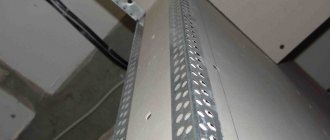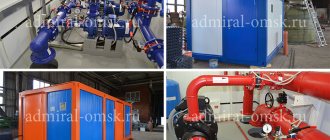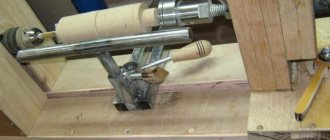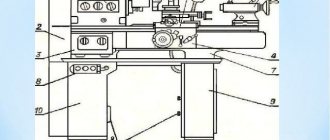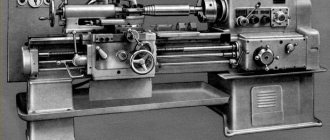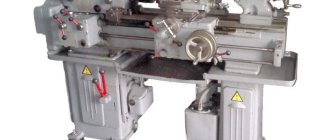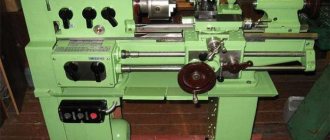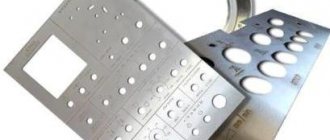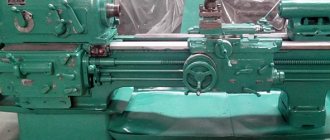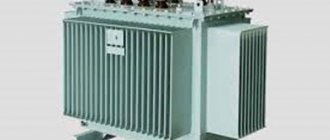The theodolite device is used when performing construction, geodetic and other work. The theodolite device allows you to accurately determine the value of vertical and horizontal angles (there are such optical and electronic devices).
Diagram of the axes of repeating and simple theodolites: 1 – theodolite stand, 2 – limb, 3 – alidade, JJ – the main axis of the theodolite, UU – level axis, VV – sighting axis, TT – horizontal axis of rotation of the pipe.
In addition to the fact that this device measures horizontal and vertical angles, it is also used to determine distance.
Depending on the accuracy of the device, there is the following classification:
- high-precision equipment is designated T1;
- instruments with normal accuracy are designated T2, T5;
- T15, T30 devices are suitable for technical use;
- educational equipment is marked T60.
Based on the marking of the device, you can find out the root-mean-square error that it will allow when measuring angles.
Description of the theodolite itself
With its help, fairly accurate measurements of horizontal and vertical angular quantities are made.
Externally, it is made in the form of a U-shaped optical device located on a rotating platform. The device platform is made in the shape of a circle, on which angular divisions are marked. In addition to the horizontal one, there is also a vertical circle with the same angular divisions. To measure range, it is equipped with various rangefinders. Modern theodolites have electronic components that improve the accuracy of measurements.
Theodolite and its components
The design of a theodolite is based on the laws of optics, mechanics, and electronics.
Theodolite device 2t30
The theodolite diagram includes the following main parts:
- the optical part of the device is a telescope;
- two perpendicularly located circles (one vertical, the other horizontal);
- Tragger systems (allowing you to remain in a stable state for a long time);
- built-in microscope (measurement method can be line or scale);
- a special rotary ruler (called an alidade);
- fixing and guiding screws;
- adjustable tripod (with its help, installation on the ground and preparation of the device for operation).
Main components of theodolite
Despite the variety of such measuring devices, the structure of the theodolite remains the same:
- sighting tube, which is fixed between two vertical columns;
- reading devices (made in the form of circles with measuring scales marked along the perimeter);
- in mechanical devices, reading devices have a bar or scale system;
- optical plummet (called “pivot”);
- adjusting device (called “cremariere”);
- All of the listed device systems are located on a tripod.
The theodolite cremarier allows you to solve the following range of problems:
- rigidly fix the position of the optical sighting device (this is necessary for accurately taking readings from the dial);
- measure the distance to the selected object;
- make accurate sighting of objects regardless of range;
- adjust the focusing lens;
- bring the main axis of the entire apparatus into a strictly vertical position;
- contributes to obtaining the so-called “virtual image”.
Reading devices
These devices allow you to count the divisions of the device dial up to the permitted fractions. They are divided into three categories: line, scale, micrometers. The angular scale can be located on a circle. In this case, it is called a goniometric circle or limb. Each of them has its own angular value for dividing the limb. In real instruments, the division accuracy varies in the range from one degree to five arcminutes. The size of the dial (diameter) is determined by the design of the theodolite. The size can vary from 72 mm to 270 mm.
The following can be used as a reference index: a single stroke, a double stroke, which is called a bisector, a zero stroke, a stroke of the main scale of the existing dial.
The simplest measuring device is a vernier.
Levels
They are necessary for precise adjustment of the theodolite relative to its vertical guide. They are used to measure small angles in the vertical plane. Any level consists of the following elements:
- a small glass flask containing a special liquid inside;
- housings that protect the flask from mechanical influences.
They are made round or cylindrical.
Flasks of cylindrical levels are made from special glass, which contains molybdenum. The liquid inside the flask is ethyl alcohol. Indelible strokes are applied to its surface at intervals of 2 mm. The minimum angle of inclination in any direction at which bubble displacement is observed is called the maximum sensitivity value.
Circles are drawn on the surface of the glass of cylindrical levels from the center to the edge with the same interval.
Working with theodolite
Working with a theodolite is the topic of this instruction. Below is a step-by-step method for measuring with a theodolite, the careful implementation of which will ensure accurate results. These instructions assume that the user has basic knowledge of how to work with a theodolite and is familiar with the main components and operating principle of the device.
Installing the theodolite into working position
Measuring horizontal angles with a theodolite involves installing the device at the apex of the angle being determined. To do this, first place a tripod so that the center of the tripod installation site is approximately above the point, and the plane of the site is horizontal. Only after this the theodolite is fixed on a tripod, the device is centered and leveled.
Centering the theodolite is the projection of the axis of rotation of the alidade and limb along a plumb line onto the top of the determined angle with an accuracy of ± 5 mm for a mechanical plumb line, ± 1-2 mm for an optical plumb line. First, the tripod is centered using a mechanical plumb line with an accuracy of 10-15 mm. In this case, it is necessary to install the tripod horizontally so that adjusting the lifting screws allows you to level the device. When installing the device on a tripod, we perform final centering of the theodolite, move the optical theodolite by loosening the mounting screw.
Leveling a theodolite is the sequential leveling of the limb plane of a horizontal goniometric circle (HUC) and bringing the vertical axis of rotation to a plumb position. The leveling process is controlled by the cylindrical level of the GUK alidade and is carried out using theodolite lifting screws. By turning the alidade, guide the level axis along two lifting screws and move the level bubble to the center. Then you should rotate the alidade 90° and, using the third lifting screw, move the bubble back to the center. The steps must be repeated until the bubble moves away from the middle at all positions of the alidade of the horizontal circle. Its permissible deviation is no more than two divisions of the cylindrical level scale.
Leveling theodolite
To obtain a reliable result, working with a theodolite requires compliance with two geometric conditions:
- the axis of rotation of the device is in a vertical position;
- the axis of the cylindrical level is in a horizontal position.
Measuring a horizontal angle with a theodolite
Sighting – aligning the center of the thread grid with a point.
A filament grid is a glass plate with lines printed on it (the nature of their application may vary). The intersection of the midlines is called the center of the Z grid.
Pointing the center of the threads to a point
To sight a theodolite to a point you must:
- Secure the dial.
- Unfasten the alidade in order to use the rough sighting device located at the top of the telescope to set the device approximately at the desired point.
- Secure the alidade.
- For observation, install the telescope so that the grid of threads has a sharp image. This operation is called eye alignment and is performed by rotating the ocular knee.
- Position the telescope so that the point of sight is best visible. This operation is called installation on an object and is performed by rotating the ratchet.
- Aim the center of the reticle exactly at the point of sight using the alidade aiming screws and the telescope. If the vertical circle is on the right side of the tube, when viewed from the eyepiece, they say “circle right” (CR). If the vertical circle is to the left - “circle left” (CL).
Measuring the horizontal angle β
Measuring a horizontal angle with a theodolite involves installing the device at the top of the horizontal angle being measured (the so-called station), and the staff at stations n+1 and n–1.
The crosshairs of the grid of threads are aligned with the lowest visible point of the rail so that the vertical thread coincides with the axis of the rail.
Then perform the following sequence of actions (first half move):
- point the center of the grid of threads at the top of the rear (right) corner (n – 1) and take a count along the limb of the horizontal circle - count a1;
- point at the top of the front (left) corner (n + 1) take the reading a2;
- determine the value of the angle in a circle to the left βcl = a1-a2.
Measurement of the horizontal angle at station n: β – horizontal angle
Before the start of the second half-reception (SP), the telescope is unlocked and moved through the zenith position. Then the alidade is unlocked and the device is rotated 180°, measurements are taken at CP. During the second half-measurement (CP), sighting and measurements are carried out similarly; the differences in angle values in the two half-measures (C) should not exceed the double accuracy of the device (t): C < 2t.
Measurement of the horizontal angle β at station n (CL): n – station n–1 – apex of the rear angle n+1 – apex of the front angle a1 – reference to the apex of the rear angle a2 – reference to the apex of the front angle
Calculation of horizontal angles
If the condition of discrepancy in the angle values obtained in two half-steps is met, the average horizontal angle is calculated using the formula: βav = (βCL + βCP) /2.
The limb of the horizontal goniometric circle is always digitized from zero to 360? through 1?, from left to right.
The horizontal circle is measured as follows:
- read the number of degrees of the reference stroke on the alidade scale (according to the figure - 125°);
- minutes are read from left to right from zero, taking into account that the division value on the GI scale is 5´ (according to the figure - 07´).
Theodolite reading microscope RGK TO-15: reading according to the GUK – “125°07´” reading according to the VUC – “-0°35´”
Measuring a vertical angle with a theodolite
The measured tilt angle can be either positive or negative, ranging from -90° to 90°.
Working with a theodolite requires leveling the alidade every time you take a reading. The position is considered horizontal when the bubble of the cylindrical level of the alidade or pipe is located in the middle of the ampoule. However, even when the bubble is in the center of the ampoule, the line of zeros of the reading device may be at a small angle with respect to the horizon line, which is called the zero point of the vertical circle (M0). An important feature of measuring vertical angles is the need to take into account the zero point of the vertical circle. To do this, when creating a survey justification, readings are taken along a vertical goniometric circle (VUC) at CL and CP, and when tacheometric surveying, the zero location is determined at each station before starting work.
When measuring vertical angles with a theodolite, the center of the grid of threads is transferred to the height of the instrument previously marked on the staff. The height of the instrument is determined using a sheet of white paper and a rod, placing it almost close to the eyepiece. The user must observe through the lens. The sheet is moved along the rail until it covers exactly ½ of the field of view. It is convenient to mark the height of the tool on the rail with a thin rubber band.
First, take a reading, sighting to the left while circling. Then, having moved the pipe through the zenith, they sight and take a reading at the right circle.
There are several ways to digitize the limb of a vertical goniometric circle (VUC). The theodolite RGK TO-15 (TO-05) has sector digitization, in which the VUK is divided into 4 sectors of 90°, of which two sectors have positive digitization, and the other two have negative digitization. To take a count:
- read the number of degrees of the reference stroke (according to the figure - “-0°”);
- minutes are read - if there is “-0” at the top - on a negative scale from zero to the reference line, if at the top there is “+0” - on a positive scale from zero to the reference line (according to the figure - “-35?”).
Next, the vertical angle is calculated. In this case, readings from 0° to 90° correspond to the measured positive vertical angle.
Calculation of vertical angles
After taking the readings, the vertical angle is calculated through M0, or based on the results of two readings obtained when sighting the target in two positions of the telescope (CL and CP).
Calculation formulas for sector digitization of the vertical circle limb from zero in both directions - clockwise and counterclockwise (RGK TO-05 and TO-15):
M0 = (KP + CL)/2; v = MO-KP; ν=KL−M0
When calculating using these formulas, it is not necessary to add 360°.
Measuring distances with a theodolite
In this section we will look at how to work with a theodolite to measure distances. In the grid of threads of the theodolite telescope there are two additional horizontal rangefinder lines located on both sides of the center of the grid of threads at equal distances. The presence of these strokes allows the theodolite to measure the distance D from the device to the staff.
To do this, use the staff to determine the value of the rangefinder interval n in centimeters, multiplying the resulting number by 100, then the resulting value from centimeters is converted to meters (the rangefinder coefficient of the telescope is usually equal to 100), i.e.
D = K*n =100*n
In the case shown in the figure:
- report on the upper rangefinder line – 1747 mm;
- report on the lower rangefinder line - 1856 mm.
The rangefinder interval n is equal to the difference between the reports on the lower and upper rangefinder lines.
n = 1856-1747 = 109 mm = 10.9 cm.
Using the formula, we calculate the distance: D = 100 * 10.9 cm = 1090 cm = 10.9 m
For measuring distances with a theodolite using a thread rangefinder, the relative error is usually from 1/100 to 1/300.
Measuring distance with a theodolite using rangefinder lines
Types of theodolites
Modern designs are distinguished by a variety of design features. The classification of devices is based on the following characteristics:
- operating principle;
- acceptable accuracy of measurements (types of theodolites);
- designs;
- species features.
According to the principle of operation, the devices are produced:
- mechanical;
- optical (reading is based on the optical system);
- digital (counting is done using electronic devices);
- laser (based on the principle of laser meters).
Structurally, the devices are made in two variants: repeating, non-repetitive.
There are types of theodolites:
- traditional;
- with built-in compensator;
- autocallimation;
- direct vision;
- mine surveyor;
- electronic.
Today the following system for designating such devices has been adopted. The letters indicate the relationship according to the accepted classification:
- “T” is the name of the device, that is, theodolite. The following letters indicate the relationship to a particular class.
- M is the so-called surveyor's theodolite. They are used in mines, tunnels, caves, and mountain passages.
- K - indicates the presence of a special compensator that completely replaces the levels.
- P – equipping the instrument with a direct vision telescope (the image is not inverted).
- A – built-in autocallimator.
- E – electronic theodolites.
Read also: Husqvarna 142 chainsaw starts and stalls
Optical surveying theodolite 2T30M
High-precision measurements allow making angular measurements with an acceptable error in the range of 0.5 arc seconds, but not more than one arc second. The second type (precision) instruments make such measurements with an accuracy of two to fifteen arc seconds. The accuracy of technical units is in the range from twenty to sixty arc seconds.
Classifications and types of theodolites
In accordance with state standards, all theodolites, according to the design accuracy of measuring horizontal angles, are divided into groups:
- high-precision (T1, TB1), with a root-mean-square error (RMS) of measuring a single angle of no more than one second;
- accurate (T2, T5) with SKP no more than five seconds;
- technical accuracy (T15, T30), which includes all other goniometer tools.
Due to the design features of the instruments, in the nomenclature of theodolites, after the SKP values, alphabetic symbols are indicated, indicating the corresponding type of instrument:
- 2T5K, with compensator;
- 4T30P, with direct image;
- 3T2KA with autocollimation eyepiece;
- 2T30M, mine surveyor;
- T30, without letter designations, means a traditional tool with a cylindrical level with a vertical circle.
Depending on the design of the elements of the horizontal circles, the static or rotating position and the relationship between the limb and the alidade, two more types of tools can be distinguished:
- repeating, allowing the limb to rotate or not rotate together with the alidade around the axis, when the alidade is secured and the limb is detached;
- non-repeating devices with only the fixing function of the dials.
Each optical theodolite can also be classified into a type depending on its intended use:
- geodesic;
- mine surveyor;
- astronomical;
- total station, which were theodolites marked TT and models T5, T30.
Principle of horizontal angle measurement
The basic principle of angle measurement is to determine the degree value between the directions of two selected objects. Before starting measurements, it is necessary to carry out preparatory operations, including leveling.
Next, the zero mark of the goniometer circle should be positioned in the direction of the axis of the measured angle. After this, the angle is measured on the scale of the horizontal circle.
The most common measurement methods are:
- method of successive repetitions;
- circular method.
The sequence of implementation of the first method is as follows. Preparation and installation at the specified location. The optical sight is first aimed at one selected object. It is then directed in the direction of another object. Before this, a preliminary visual guidance is carried out. By using the focusing screw while simultaneously adjusting the diopter ring, you can accurately target each object. The accuracy of the operation is assessed using vertical threads. Having fixed the direction to the first object, read the readings marked on the horizontal circle. Next, loosen the fastening screw and change the direction of the optical device to the second object. Repeat the data fixation operation. Readings are taken from it and recorded.
The second method is suitable for measuring horizontal angles from one point. Using an alidade, the device is oriented towards the first selected object and the dial is set to zero. Next, move the telescope in the selected direction (clockwise). I read the readings according to the horizontal circle. The final result is calculated taking into account the established error of a particular device.
2.1. Purpose, composition and order of work
Goal of the work:
get acquainted with the design of technical theodolites T30, 2T30, 2T30P and 4T30P, with their reading devices, with the technique of measuring horizontal angles using the method, acquire the skill of measuring horizontal angles using the method.
The work is performed individually by each student. The student receives a teaching aid and a theodolite. The teacher sets the number of the device installation station and the numbers of the marks between which horizontal angles need to be measured.
The work includes:
1) familiarization with the design of theodolite T30 or its modifications 2T30, 2T30P, 4T30P;
2) installation of theodolite in working position;
3) measuring horizontal angles using the method, processing the log of measuring horizontal angles.
When passing the laboratory work, the student must be able to answer the teacher’s test questions.
Geometric parameters of theodolites
Geometric parameters mean strict adherence to the geometric position of each theodolite element.
These parameters are:
- Position of the cylindrical level (located perpendicular to the axis of the grand rod).
- Direction of the line of rotation (vertical to the line of the main rod itself).
- Orientation of the central axis of the sighting tube (horizontal, regardless of the direction and magnitude of the rotation angle).
- Orientation of the telescope and the main rod (always mutually perpendicular).
See also
Crocs
— A drawing of a section of terrain, displaying its most important elements, made using visual surveying.
Rack
— A device for focusing the telescope of a geodetic instrument.
Map
— A simplified map (usually devoid of a cartographic grid), the content of which is strictly limited to elements important for understanding its plot.
Map
— Constructed in a map projection; a reduced, generalized image of the surface of the Earth, the surface of another celestial body or extraterrestrial space, showing the objects located on them in a certain system of conventional symbols.
Grid (topographic)
— A set of two families of mutually perpendicular lines drawn parallel to the axes of rectangular coordinates and forming a rectangular grid.
Cartogram
— A map showing by shading (of varying thickness) or coloring (of varying degrees of saturation) the average intensity of some indicator within each unit of the territorial division plotted on the map.
Kipregel
— A geodetic instrument for drawing directions and determining distances and elevations during scale surveys.
Cadastre
— Systematized collection of basic information about certain natural objects.
Red lines
— Lines that indicate existing, planned (changed, newly formed) boundaries of public areas, boundaries of land plots on which engineering and technical support networks, power lines, communication lines, pipelines, highways, railway lanes and other similar structures are located.
Basin
— The depression, limited by slopes of varying steepness and shape, is of considerable size.
Slope steepness
— The angle formed by the direction of the slope with the horizontal plane and expressed in angular measures or slopes.
Cartographic grid
— Image on the map of geographical meridians and parallels in one or another cartographic projection. It is used to construct a cartographic image and allows you to determine the coordinates of points on the map.
Combined shooting
— A method for creating topographic maps of flat-flat populated areas, in which the contour part of the map is obtained from aerial photographs or photographic plans, and the relief is reproduced on aerial photographic material in the field using scale photography techniques.
Instructions for bringing the theodolite into working position
Preparing the device is a very important step before taking measurements.
Centering
The action involves a preliminary selection and subsequent installation of the theodolite exactly above the center of a known geodetic point. This is usually carried out using an optical plummet. In other cases, use a regular construction plumb line.
Leveling
It involves installing a horizontal circle using level readings in a horizontal position.
It is performed after completing an additional check of the alidade level. Adjustment is made using lifting screws.
Focusing
Focusing the device involves setting a clear image. The installation accuracy is assessed by the clarity of the observed filament grid. It is carried out by slowly changing the position of the diopter ring. The movement continues until a clear image of each thread is obtained.
Theodolite measurement
Measurements of horizontal and vertical angles are carried out using a proven device. Before taking measurements, it is necessary to check the smooth movement of all moving parts of the device. Rotate the device's alidade, screws, and cremarriers. Reducing possible errors is achieved by rotating the alidade in the selected direction. Movements should be smooth without sudden jerks. It is not advisable to carry out reciprocating movements.
Before starting to measure the angle in the horizontal plane, the device is installed vertically above the reference point. Then the necessary preparatory actions are carried out. To get good results, you should repeat these steps several times. This will eliminate possible errors and inaccuracies that could negatively affect the measurement result.
The processes for measuring angles in different planes are fundamentally different. These differences are:
- The horizontal angle is calculated as the arithmetic difference between the measured values. The vertical angle is determined between the plane and the amount of elevation of the telescope.
- The horizontal angle is measured on pre-selected areas of the circle, the vertical angle is measured without any rearrangements.
- The number of methods for determining horizontal angles exceeds this number for vertical angles.
Processing of the measurements taken consists of calculating average values. The result is subtracted from other results. In this way the “reduced direction” is obtained. An assessment of the collimation error is used to confirm the accuracy of the measurements taken. It is obtained on the basis of available passport data on the accuracy of the theodolite.
If you need to obtain more accurate calculations, you can use the methods of probability theory and mathematical statistics. Calculate the mathematical expectation and variance.
Using a theodolite
There are many techniques for professional use of devices, and they are taught in special courses, here we present the main ones.
- Installation of theodolite. The first step is to find a starting point. On the ground, we find a flat surface on which we center the device on the stand with levels and clamping screws. As a result, the position of the device should be strictly horizontal.
- We catch the object. We use the sight to find the target and more accurately aim the measuring grid with the screws to establish the center of the object. We look at this through an eyepiece, and if there is not enough light, a special mirror will help improve the situation (as is the case with a microscope). After setting the center, the eyepiece records its value.
- Processing the results. It is better to take not one, but several measurements. A new reading is recommended to a known value, for example 90°. If the new measurements differ from the previous ones by 90°, then the result can be recorded; if not, a couple more similar measurements are made with different readings and the average value is calculated.
Correct operation
Compliance with the rules for operating a theodolite will prevent serious errors when taking measurements. These rules include the sequence of actions at various stages of operation of the device:
- during storage;
- in preparation for work;
- during measurements;
- sequence of evaluation of the results obtained;
- procedure for assembling the theodolite after work.
Particular attention should be paid to all these rules under special environmental conditions: temperature, humidity, wind strength, lighting. Almost all theodolites have a temperature range permitted for operation from -25 °C to +50 °C of any humidity. However, it should be remembered that too low or high temperatures will affect the accuracy of the readings taken.
Theodolite verification
Like any measuring instrument, the theodolite must be checked periodically. This operation in metrology is called verification. The frequency of verification for each type of theodolites is set individually. Each verification includes a list of the most important parameters that affect the accuracy of measurements.
These device parameters include:
- mechanical (no deformation on the main mechanical parts, integrity of measurement scales, reliability of threaded connections, absence of corrosion elements);
- characteristics of the device's optical system;
- geometric parameters of measuring elements;
- operability of the cylindrical or circular alidade level;
- the magnitude of the collimation error;
- equal length of all tripod elements;
- accuracy of position and focusing of the mesh of threads;
During verification, adjustments are made to device parameters that are outside the tolerance limits.
If you find an error, please select a piece of text and press Ctrl+Enter.
